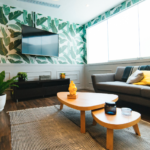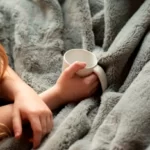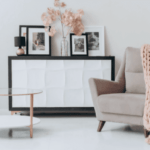Color quietly decides how a home feels long before furniture or lighting do. A pale wall can relax the mind; a bold shade can make the same space feel energetic. Every tone stirs a reaction some gentle, some strong.
Modern design conversations have turned toward the connection between color and comfort. The right palette does more than please the eyes; it shapes daily moods. With time, homes have begun reflecting not just style but the way people want to feel in their surroundings: calm, lively, secure, or inspired.

The Basics of Color Psychology
Colors behave like characters, each bringing its own personality into a room. Primary hues red, blue, yellow carry the essence of emotion. Red stands for warmth and courage, blue for calm and clarity, yellow for light and cheer. Their combinations create new moods: green for balance, orange for enthusiasm, purple for quiet richness.
Designers often think in terms of temperature. Warm colors make rooms feel closer and more alive; cool tones offer relief and space. A mix of both, held together by neutrals, keeps the energy even.
Culture also shapes what a color means. White might signal purity in one place, grief in another. Awareness of such differences brings depth to interior choices and prevents rooms from feeling impersonal.
Choosing Colors for Each Room
Different corners of a home serve different emotions, and color helps define them
Living Room
This is usually where laughter and stories live. Warm neutrals, light beige, or sage green invite people to settle in. Deeper shades rust, navy, or emerald add substance without heaviness.
Bedroom
The goal here is ease. Soft blue, gray, or cream creates calm and makes rest feel natural. When paired with a sleek wardrobe for clothes in similar soothing tones, the space feels even more balanced and clutter-free. Overly bright colors can disturb the mind at night, so muted shades work better for long-term peace and relaxation.
Kitchen and Dining
These spaces thrive on warmth. Terracotta, mustard, or earthy red lift energy and appetite. Natural wood, brass, and stone pair beautifully, keeping the space friendly and open.
Home Office
Concentration needs steady surroundings. Green promotes focus; pale blue helps thinking. Even a neutral backdrop with one colored accent can keep ideas flowing.
Kids’ Room
Playful shades mint, coral, sunshine yellow keep the spirit light. Balanced with soft whites or pastels, they create cheer without chaos.
Blending Tones and Textures
Color never stands alone. Texture changes how it speaks. A matte wall absorbs light; silk curtains reflect it. A dark color looks heavy on plain paint but softer when woven through cushions or rugs.
Layering tones through textiles and surfaces makes a room feel lived in. A cream sofa bed under a walnut ceiling, a navy wall beside linen drapes these contrasts give rhythm. Natural finishes like wood, rattan, and clay calm the sharper edges of paint. Plants and greenery, meanwhile, tie every palette back to life.
How to Apply Color Psychology in Real Homes
No rule says everything must change overnight. Small experiments work best. Try changing cushion covers or adding one painted wall before deciding on an entire scheme.
Lighting decides how a shade behaves. Observe colors at sunrise, afternoon, and night. A tone that feels soothing in daylight might turn dull after dark.
In large open areas, use color to guide movement. One hue for dining, another for relaxing it helps separate spaces without using partitions. Balance bolder tones with quiet neutrals so the home feels unified.
Trends often fade quickly, but comfort doesn’t. The most successful designs come from colors that feel right every day, not just the ones that look new.
Conclusion
Every wall, every cushion, every stroke of paint carries emotion. Color, when used with understanding, turns a house into a mirror of life inside it.
It can lift tired spirits, slow busy minds, or add spark to dull corners. That’s why color psychology matters; it’s not theory; it’s experience. Homes that follow this approach don’t just look arranged, they feel right. And that feeling lasts longer than any trend.






